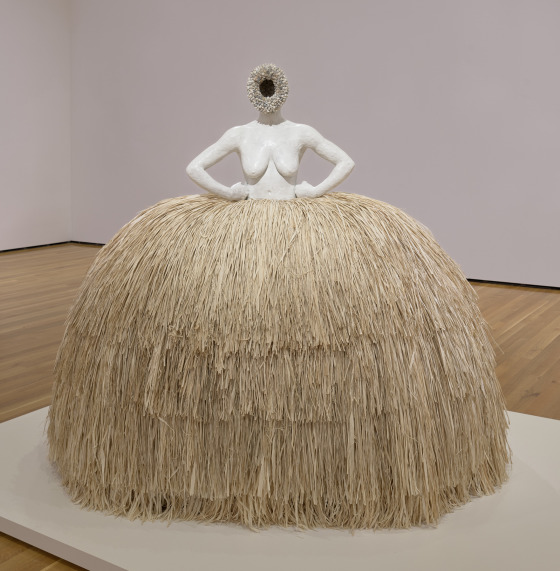Discover a world of love at the CMA

Simone Leigh’s 2019 sculpture “Las Meninas” is a bold depiction of vulnerability and confidence.
The aspiration to express love as a describable, tangible thing has turned so many to art, a realm in which we are free to characterize love as we wish. Artists attempt to capture how it moves us and how it ties us to one another in complex and ever-evolving ways. No two depictions of love are identical, and as we are unique individuals we all have our own ways of navigating the relationships we build. While at times the adventure can include confusing and challenging waters, love allows us to develop as emotional beings and find joy in sharing the world with those we appreciate.
So, how do you show your love? In the spirit of Valentine’s Day, take a trip to the The Cleveland Museum of Art and experience first-hand how artists throughout history have recorded the connections and feelings that have defined them. Looking for a place to start? Check out one of the works below and let your heart guide you from there.
The statue “Aphrodite” from 4th to 3rd century BCE Greece is an ethereal, if historically standard, representation of the classical view of love incarnate. Deftly molded from now faded terracotta, this rendition of the ancient Greek goddess of love is the picture of idealised romance, with the soft curls resting atop her forehead and her graceful—though slightly marred—posture. The statue, standing just over 17 inches tall and missing two limbs, was likely used as a religious offering to support a prayer to romantic ardour. Despite the barrage of time and the elements, there’s no doubt that this feeling of love has endured.
High in the Andes Mountains of Central Peru, weaving brilliant macaw feathers together into expansive tapestries was long revered as a cherished act of service. Gathering so many feathers from the dense Amazon rainforest would have been an imposing feat, further emphasising the dedication required to create the “Feathered Panel” tapestry. Made between the 7th to 10th century and discovered in an ancient Andean tomb, it epitomizes many emotions. It is the pain of a severed connection that makes burying a loved one so tragic, but the memories of a life well lived serve as an eternal comfort. Such a vibrant tapestry would have been a powerful reminder that although we come and go, the impressions we leave on those around us will never fade.
Peter Paul Rubens’ 1620-25 “Portrait of Isabella Brant” represents a playful, enriching romance rooted primarily in a thriving friendship. Rubens’ frequent model and first wife Isabella boasts a mischievous smile, hinting at a secret joke between her and the artist. Her raised eyebrows highlight her cheeky demeanour, and her attire, though somewhat formal, is worn comfortably, emphasising how at ease she feels when alongside her husband. The darkness of the paint makes Isabella’s features even more striking, alluding to her importance in Rubens’ work.
“Interior with an Etruscan Vase” by Henri Matisse is synonymous with the emotional changes we experience as our attitudes towards love shift with our circumstances. Painted in 1940 as the Nazis invaded France, Matisse captures a tender moment with a woman —probably his mistress—as she and the rest of his world teeter on the edge of ruin. The vestiges of life stand tall in the ancient Italian vase, with fresh fruit rolling across the tabletop, the subject gazing devotedly, and some of Matisse’s pre-war pieces hanging on the wall, all while black-out curtains across the windows cast a deep shadow over the scene. Despite their uneasiness, these two have built their own existence, one in which their love for one another will endure, despite the threat of an unknown future.
Learning how to give to others while respecting your own emotional needs is an essential task. How can you love another without first acknowledging yourself? Simone Leigh’s 2019 sculpture, “Las Meninas,” embodies this sense of self-assurance by turning society’s pre-set expectations and standards on their heads, paving the way for individuals to present themselves as they choose. The creation of spaces in which we can unapologetically be ourselves is what allows us to learn about and love who we are. This ensures that when it comes time to see the world through someone else’s perspective, we will do so with strength. Both inspired by and posing a challenge to Diego Velázquez’s 1656 painting of the same name, Leigh’s “Las Meninas” utilises vulnerability and confidence to teach us that in loving and honoring ourselves, we open the door for others to do the same.
Close your eyes and envision what love means to you. Is it a feeling? A face? A memory? What you see is a representation just as beautiful and worthy as any famous masterwork. Next time you’re at the CMA, take some time to explore the many forms of love on display and discover something new about the emotion we all know so well.

